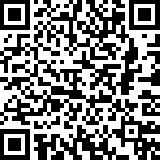In our degree course curriculum the level four subjects were mainly targeted to focus our selves towards research. This Semester our faculty has offered some challenging subject areas for us to select, including Fuzzy Logic, Theory of Programming Languages, Advanced IT Project management, Theory of Complexity and Computability, Multi Agent Based Systems, Geographic Information System, Business Law, Advance Topics in Mathematics, Broadband Networks, Distributed Computing and Mobile Computing. Out of this I’m taking six subjects during this semester plus the individual project which continues along to the next semester. And some other interesting areas are due on next semester as well, such as Robotics, Embedded Systems, Compiler Theory, Natural Language Processing, High Performance Computing, Data Warehousing, etc.
I selected to follow the Geographic Information System (GIS) during this semester and I found it very interesting in learning the principles and the basics of how things are done with Google Earth, OpenLayers, to name a few. During my intern-ship period I got the opportunity to work with several of the maps at LSF under the project Sahana. The Sahana system provides the necessary interface to work with currently available maps on the Internet. At LSF I learn many practical stuff related GIS from Mifan and Chamila. This interests me in taking up this subject at the university. The lecturer who does the GIS lecture told that we are the first batch to follow the GIS at the undergraduate level in Sri Lanka, Wow I feel I’m so fortunate 🙂 .
“A geographic information system (GIS), captures, stores, analyzes, manages, and presents data that refers to or is linked to location. In the strictest sense, the term describes any information system that integrates, stores, edits, analyzes, shares, and displays geographic information. In a more generic sense, GIS applications are tools that allow users to create interactive queries (user created searches), analyze spatial information, edit data, maps, and present the results of all these operations.” Source: Wikipedia.
This is my last year at university as an undergraduate, looking back as a batch we jumped several hurdles during the past three years, there were some memorable times as well as really hurting times. I think its best to achieve things in the hard way because that taught us the real value and how we should organise ourselves to achieve success in challenging situations in our life.
